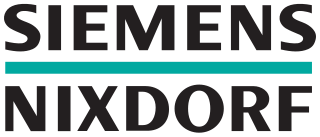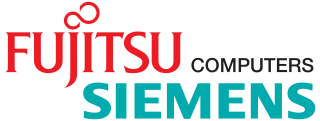Related Research Articles

Symmetric multiprocessing or shared-memory multiprocessing (SMP) involves a multiprocessor computer hardware and software architecture where two or more identical processors are connected to a single, shared main memory, have full access to all input and output devices, and are controlled by a single operating system instance that treats all processors equally, reserving none for special purposes. Most multiprocessor systems today use an SMP architecture. In the case of multi-core processors, the SMP architecture applies to the cores, treating them as separate processors.
Multiprocessing is the use of two or more central processing units (CPUs) within a single computer system. The term also refers to the ability of a system to support more than one processor or the ability to allocate tasks between them. There are many variations on this basic theme, and the definition of multiprocessing can vary with context, mostly as a function of how CPUs are defined.

Siemens Nixdorf Informationssysteme, AG (SNI) was formed in 1990 by the merger of Nixdorf Computer and the Data Information Services (DIS) division of Siemens.
Sequent Computer Systems was a computer company that designed and manufactured multiprocessing computer systems. They were among the pioneers in high-performance symmetric multiprocessing (SMP) open systems, innovating in both hardware and software.
Pyramid Technology Corporation was a computer company that produced a number of RISC-based minicomputers at the upper end of the performance range. It was based in the San Francisco Bay Area of California

Unix System V is one of the first commercial versions of the Unix operating system. It was originally developed by AT&T and first released in 1983. Four major versions of System V were released, numbered 1, 2, 3, and 4. System V Release 4 (SVR4) was commercially the most successful version, being the result of an effort, marketed as Unix System Unification, which solicited the collaboration of the major Unix vendors. It was the source of several common commercial Unix features. System V is sometimes abbreviated to SysV.

XNU is the computer operating system (OS) kernel developed at Apple Inc. since December 1996 for use in the Mac OS X operating system and released as free and open-source software as part of the Darwin OS, which, in addition to being the basis for macOS, is also the basis for Apple TV Software, iOS, iPadOS, watchOS, visionOS, and tvOS.
Nucleus RTOS is a real-time operating system (RTOS) produced by the Embedded Software Division of Mentor Graphics, a Siemens Business, supporting 32- and 64-bit embedded system platforms. The operating system (OS) is designed for real-time embedded systems for medical, industrial, consumer, aerospace, and Internet of things (IoT) uses. Nucleus was released first in 1993. The latest version is 3.x, and includes features such as power management, process model, 64-bit support, safety certification, and support for heterogeneous computing multi-core system on a chip (SOCs) processors.
AT&T Computer Systems is the generic name for American Telephone & Telegraph's unsuccessful attempt to compete in the computer business. In return for divesting the local Bell Operating Companies, AT&T was allowed to have an unregulated division to sell computer hardware and software. The company made the 3B series computers.
RISC/os is a discontinued UNIX operating system developed by MIPS Computer Systems, Inc. from 1985 to 1992, for their computer workstations and servers, including such models as the MIPS M/120 server and MIPS Magnum workstation. It was also known as UMIPS or MIPS OS.

Fujitsu Siemens Computers GmbH was a Japanese and German vendor of information technology. The company was founded in 1999 as a 50/50 joint venture between Fujitsu of Japan and Siemens AG of Germany. On April 1, 2009, the company became Fujitsu Technology Solutions as a result of Fujitsu buying out Siemens' share of the company.
Cellular multiprocessing is a multiprocessing computing architecture designed initially for Intel central processing units from Unisys, a worldwide information technology consulting company.

Nixdorf Computer AG was a West German computer company founded by Heinz Nixdorf in 1952. Headquartered in Paderborn, Germany, it became the fourth largest computer company in Europe, and a worldwide specialist in banking and point-of-sale systems.
SINIX is a discontinued variant of the Unix operating system from Siemens Nixdorf Informationssysteme. SINIX supersedes SIRM OS and Pyramid Technology's DC/OSx. Following X/Open's acceptance that its requirements for the use of the UNIX trademark were met, version 5.44 and subsequent releases were published as Reliant UNIX by Fujitsu Siemens Computers.

The R4000 is a microprocessor developed by MIPS Computer Systems that implements the MIPS III instruction set architecture (ISA). Officially announced on 1 October 1991, it was one of the first 64-bit microprocessors and the first MIPS III implementation. In the early 1990s, when RISC microprocessors were expected to replace CISC microprocessors such as the Intel i486, the R4000 was selected to be the microprocessor of the Advanced Computing Environment (ACE), an industry standard that intended to define a common RISC platform. ACE ultimately failed for a number of reasons, but the R4000 found success in the workstation and server markets.
In some versions of the Unix operating system, the term universe was used to denote some variant of the working environment. During the late 1980s, most commercial Unix variants were derived from either System V or BSD. Most versions provided both BSD and System V universes and allowed the user to switch between them. Each universe, typically implemented by separate directory trees or separate filesystems, usually included different versions of commands, libraries, man pages, and header files. While such a facility offered the ability to develop applications portable across both System V and BSD variants, the requirements in disk space and maintenance gave them a problematic reputation. Systems that offered this facility included Harris/Concurrent's CX/UX, Convex's Convex/OS, Apollo's Domain/OS, Pyramid's DC/OSx, Concurrent's Masscomp/RTU, MIPS Computer Systems' RISC/os, Sequent's DYNIX/ptx and Siemens' SINIX.

Fujitsu Technology Solutions GmbH is a Munich-based information technology vendor in the so-called "EMEIA" markets: Europe, the Middle East, India and Africa. A subsidiary of Fujitsu in Tokyo, FTS was founded in 2009 when the parent firm bought out Siemens' 50% share of Fujitsu Siemens Computers.
SESAM / SQL Server is a relational database system originally developed by Siemens, whose role as developer was successively succeeded by Siemens Nixdorf Informationssysteme (SNI), Fujitsu Siemens Computers, and now Fujitsu Technology Solutions. It runs on the BS2000/OSD mainframe.
References
- ↑ DiDio, Laura (27 February 1989). "Pyramid offers host-class processor based on Unix". Network World. IDG. p. 23-24. Retrieved 2 May 2024.
- ↑ Dc/osx: Definition and additional resources from ZDNet
- ↑ Pyramid: source of Nile - Pyramid Technology Corp. announces Nile Series of RISC-based symmetric multiprocessing servers - Client/Server Computing Edition
- ↑ Siemens Nixdorf Bets On Intel And 64-Bit Solaris X86, Computergram International